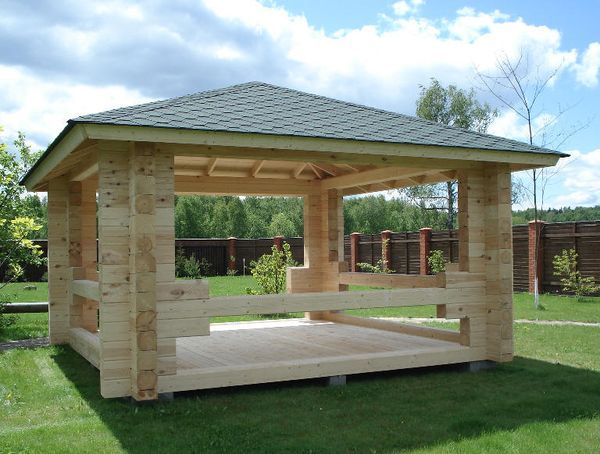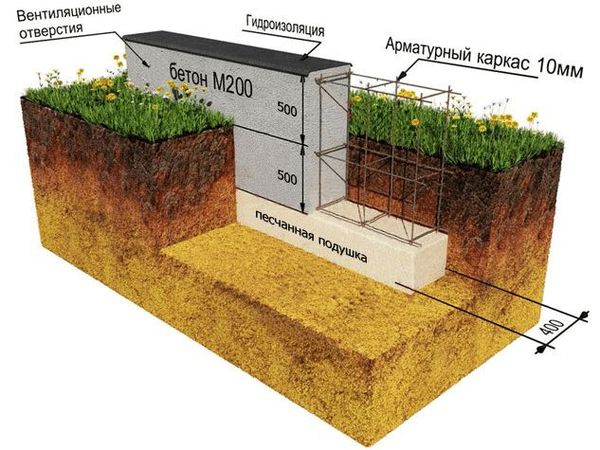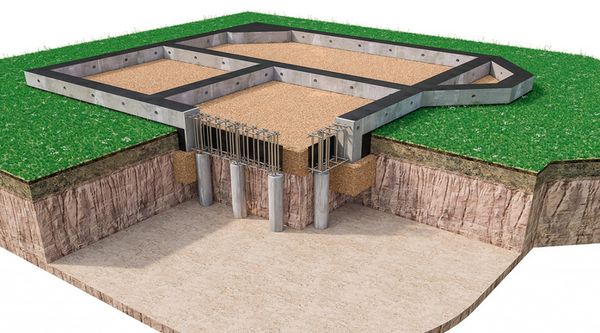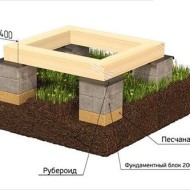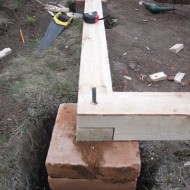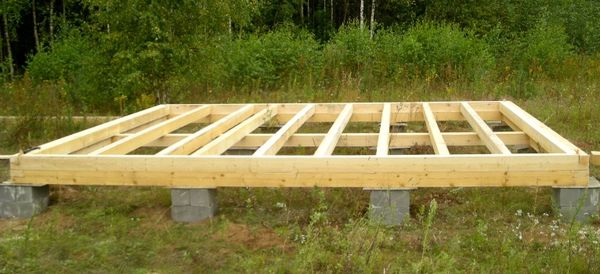The foundation for the gazebo: varieties and manufacturing technology
Content
Varieties of gazebos
Many summer residents strive to organize a place for recreation on their site. If there is not enough space, an extension to the house is made - a veranda or a terrace adjacent to the building, a patio area is arranged in the backyard. But if the site is quite spacious, it is better to build a gazebo.
Traditionally, it is made of a closed type, equipped with glazed windows and entrance doors. It turns out a miniature mansion, in which, with good heating, you can stay even in winter. Such a structure needs a reliable strip foundation capable of supporting the capital structure.
More summer options are open gazebos that do not have windows and walls. Several columnar supports make up the frame of the structure on which the roof is held. The structure weighs a little, therefore, on the basis of the base, you can save some money by dispensing with a columnar foundation.
A simple version of the gazebo is an openwork structure with lattice walls entwined with grapes or ivy, the so-called belvederes. They are lightweight, but it is also advisable for them to organize a reliable foundation by solidly concreting the lower platform before laying the floor covering.
Often, a portable barbecue is installed inside the recreation area or even a full-fledged barbecue stove is built from bricks. The gazebo acquires the function of a summer kitchen. In this case, you also need to take care of a reliable foundation, as required by fire safety standards.
Video "How to build a gazebo alone"
From this video you will learn how to build a wooden gazebo with your own hands.
Views
The construction market offers several types of foundations that differ in engineering design:
- columnar;
- pile;
- tape;
- slab.
Each of them has its own advantages and disadvantages. When choosing, first of all, they pay attention to two factors:
- the weight of the future structure;
- soil characteristics at the construction site.
Let's consider the most common types of foundation in more detail.
Tape
It has a complex structure, therefore, it requires a lot of effort and building materials to bookmark. The base turns out to be reliable, designed for capital structures made of concrete or brick.
For wooden arbors, a strip foundation will also work. It is worth resorting to it if it is planned to build a solid gazebo made of brick or stone, which will require a reliable concrete belt.
The strip-type foundation is laid according to the following scheme:
- On the site around the perimeter of the future building, a trench 40-50 cm deep is being dug.
- The bottom is covered with a 10 cm high sand cushion.
- Formwork is being constructed over the trench.
- All voids are filled with a reinforcing cage - a structure made of metal bars.
- The trench and formwork are filled with concrete.
The material needs about a month to harden. After setting, they begin to erect the walls of the future gazebo. Before this, the concrete base is covered with a waterproofing material, for example, roofing material.
Both digging a trench and constructing formwork - all this takes time and effort.Also, a considerable amount of cubic meters of concrete and construction reinforcement is consumed for pouring. It is not surprising that strip foundations are considered one of the most expensive.
Pile
While using concrete structures to lay the foundation seems like a safe option, there is a fundamentally different approach. The pile (or pile-screw) foundation involves the use of piles - pipes of several varieties. They differ in wall thickness and trunk diameter, designed for different weights of buildings. Each pile is equipped with helical blades, with the help of which it is screwed into the ground.
This method has several advantages:
- all work can be completed in one day;
- construction is possible even in winter;
- gives the structure a light and airy look;
- suitable for the most "bad" sites for construction: hilly and uneven, with strong elevation changes, with swampy and peaty soils;
- the cost turns out to be 40% lower than the construction of a tape analogue.
The solidity of the pile foundation allows it to be used not only for the construction of light wooden arbors, but also for the construction of a residential building, outbuildings, etc. Buildings can be built even on a slope, simply by adjusting the height of the piles by one level.
Installation of the pile foundation is carried out as follows:
- Piles of the required type are selected.
- The site is prepared for construction: garbage is removed, the top layer of soil is removed to avoid the appearance of weeds.
- Based on the plan, places for the installation of piles are outlined.
- Screw piles are screwed in at the selected points. In depth, it is necessary to reach solid ground, which will reliably hold the future structure.
- A sand cushion with a thickness of 50–60 cm is organized throughout the site, and another layer of crushed stone of the same thickness is placed on top. Such an embankment will not allow grass to grow, at the same time it will act as a drainage system.
- The upper part of the piles should have special square base plates. If not, they are welded, making sure that everyone is in the same horizontal area. If necessary, cut the pipe to the required length before welding.
- Holes are drilled in the plates for mounting the lower trim of the future building.
Before starting the construction of the building itself, it is recommended to cover the soles with waterproofing material - roofing material, etc.
Columnar
Instead of building a solid concrete belt around the entire perimeter, for light structures, you can do with deepening several support pillars into the ground. This approach significantly reduces the cost of construction.
The pillars are made square or round, they must be placed at the corners of the future structure, as well as in the middle between the corner ones. However, if the building is planned to be made too large, the number of pillars will have to be increased.
Here is a step-by-step instruction for laying a columnar foundation:
- According to the existing drawing, the required number of holes is being dug on the site. The depth depends on the properties of the soil - for loose and clayey it is necessary to deepen as much as possible. Wooden structures do not require massive foundations; for a brick gazebo, more solid pillars will be needed.
- A sand cushion 10 cm deep is built in the pits, then a layer of stones or gravel is poured - another 10 cm.
- The posts can be made from different materials. Sometimes a formwork is built over the pit and poured with concrete, sometimes it is assembled from bricks, or even ready-made concrete blocks of the required length are simply dug in. Often, different approaches alternate: the pit is concreted, a column of bricks is laid on top.
On the finished posts from a thick bar, a lower harness is mounted, which will already serve as a support for the construction of the entire frame. This approach is suitable for light wooden arbors, but it is not suitable for a brick structure - the material is heavy, the supports must be tied with a full-fledged concrete belt.
Other solutions
A monolithic foundation is also suitable for most light and heavy structures. Designed for heavy loads, it is a flat, concreted area that completely covers the entire area under the building. A monolithic slab will require the construction of formwork and concrete pouring, so this method cannot be called easy and cheap. However, thanks to him:
- you can build on any soil;
- the weight of the building is evenly distributed over the entire site;
- it is possible to avoid deformations and distortions of the structure in the future.
A more budgetary option is to use ready-made concrete blocks as a foundation. They are installed in places where concrete posts would otherwise be required. They dig a little into the ground in order to trim it at the same height.
Domestic craftsmen suggest using old car tires in the construction of a gazebo in the country. They are filled with crushed stone, stones and pieces of brick, covered with earth, then a lower strapping is mounted on top, after having placed metal reinforcement on top.
The foundation is an important foundation for any reliable building. For home construction, you can use any type, the main thing is to perform all actions competently, be sure to observe the required safety rules.

